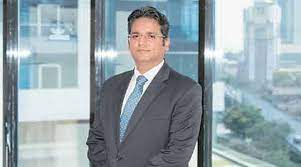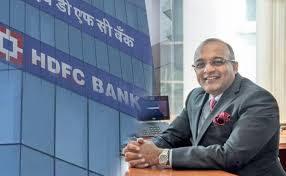The dilemma India’s largest private sector bank faces today is growth versus profitability even as its credit-to-deposit (CD) ratio is uncomfortably high at 110% and liquidity is tight in the banking system.
In a post-merger scenario, HDFC Bank badly needs its deposits to outpace the loan rate of growth. Pre-merger with parent HDFC Ltd, the CD ratio of HDFC Bank was typically in the 80s.
The bank needs to work on bringing the CD ratio down. “The merger took it (CD) ratio to where it is today, past the 100-mark. We can’t keep the CD ratio to be growing all the time. We need to bring it down over a period of time. For the CD ratio to progressively fall, the deposit rate of growth should be at least 300, 400 basis points higher than the loan growth. Only then will the economics work,” said HDFC Bank chief financial officer Srinivasan Vaidyanathan.
For the CD ratio to come to a more acceptable range, the loan growth has to moderate. If HDFC Bank decides to focus more on growth, then margins will take a knock as the lender will have to further hike the interest rate on deposits.
“We are focused on profitable growth. We certainly do not want growth for the sake of growth,” said Vaidyanathan.
That choice came out clearly in the quarter ended December 2023. The bank has come under pressure after the merger with analysts raising concern over its lending margins and sluggish deposit growth since the merger with HDFC Ltd. In some cases, the bank has let deposits go if it did not come at the right cost.
The bank has focus on margins. “If you look at our wholesale growth, we had 1.9% in the quarter (ended 31 December 2023). Enough demand was there. There were several banks undercutting but we let that move on. We don't need to be participating if it does not give returns, we don't want to be there. We want to do the products that are going to give us the returns,” Vaidyanathan told analysts in a post earnings call after the fiscal third quarter results.
In the pre-merger period, HDFC Bank did not have to think of margins as a big issue as the bank had a predominantly retail loan mix. The retail rate of growth was high and always outstripped the wholesale side for over a decade. And retail loans come with good margins.
In recent times, wholesale growth has been overwhelming the retail loan growth. “We do need to reverse that. That's part of the process in terms of what we are going through,” Vaidyanathan told analysts.
Even as profitability gets the upper hand, HDFC Bank will look to balance it with growth. Vaidyanathan said growth may be slower in some quarters but the fact is that the bank has doubled in every four to five years.
“If you look at our rate of growth, sometimes we are slower, sometimes faster. But we have always doubled in every four to five years. Over a period of time, we want growth because that's the investment we have made and we need to harvest returns on them,” he added.
How is HDFC Bank going to expand its margins from 3.4% to the targeted 3.7% in an ecosystem where mobilising incremental low-cost current account savings account (CASA) deposits is getting to be a challenge as term deposits are a trend in a high interest-rate regime? Deposit growth is also becoming difficult to keep pace with the rising loan requirements.
Vaidyanathan says many levers are available. An important lever is enhancing the retail mix, which has been continuously coming down in recent months. There is opportunity space in unsecured loans as well.
“Of late, we haven’t had that kind of a market rate of growth on unsecured loans. Our personal loan segment has been growing at 2-3% over the last two quarters. That’s part of our credit kind of process where periodically they calibrate up and down. Retail asset growth, particularly the non-mortgage retail asset where there is a yield, needs to come up,” Vaidyanathan told analysts.
The other big opportunity is in the mortgage space. For the existing customers, the bank has almost 4.8 million pre-approved, prequalified databases to go through. They are eligible and the lender is making offers to them. There are also 5.6 million customers who are already somewhere and HDFC Bank is targeting that.
Another lever is the CASA ratio, which is currently facing headwinds and is at 37.7%. But before merger, this was at around 42% over a long period of time. “We are confident of upping the CASA ratio back,” said Vaidyanathan.
One way of getting the CASA ratio up is by roping in new customers. In the nine months ending December 2023, the bank has brought in 7.4 million new customer liability relationships. “It is important to bring in new customers and get them to a level of maturity. We are working in that area to increase the CASA ratio.
Almost 21% of HDFC Bank’s balance sheet is borrowings, up from the earlier 8%. The borrowings can continue. So, in the December quarter the bank issued Rs 7,425 crore of bonds for infrastructure and affordable housing projects.
“This is not like CASA but is slightly better than a time deposit because you can obviate the primary sector lending certificates (PSLC) cost as affordable housing is tagged against it. We do have almost Rs 1 trillion of affordable housing in our assets that we can stack up. The deposit insurance cost is obviated. So, it equates to slightly better than our time deposits at an overall level. That doesn't mean that we do not need CASA. But there are other opportunities on the borrowings side, too,” said Vaidyanathan.






